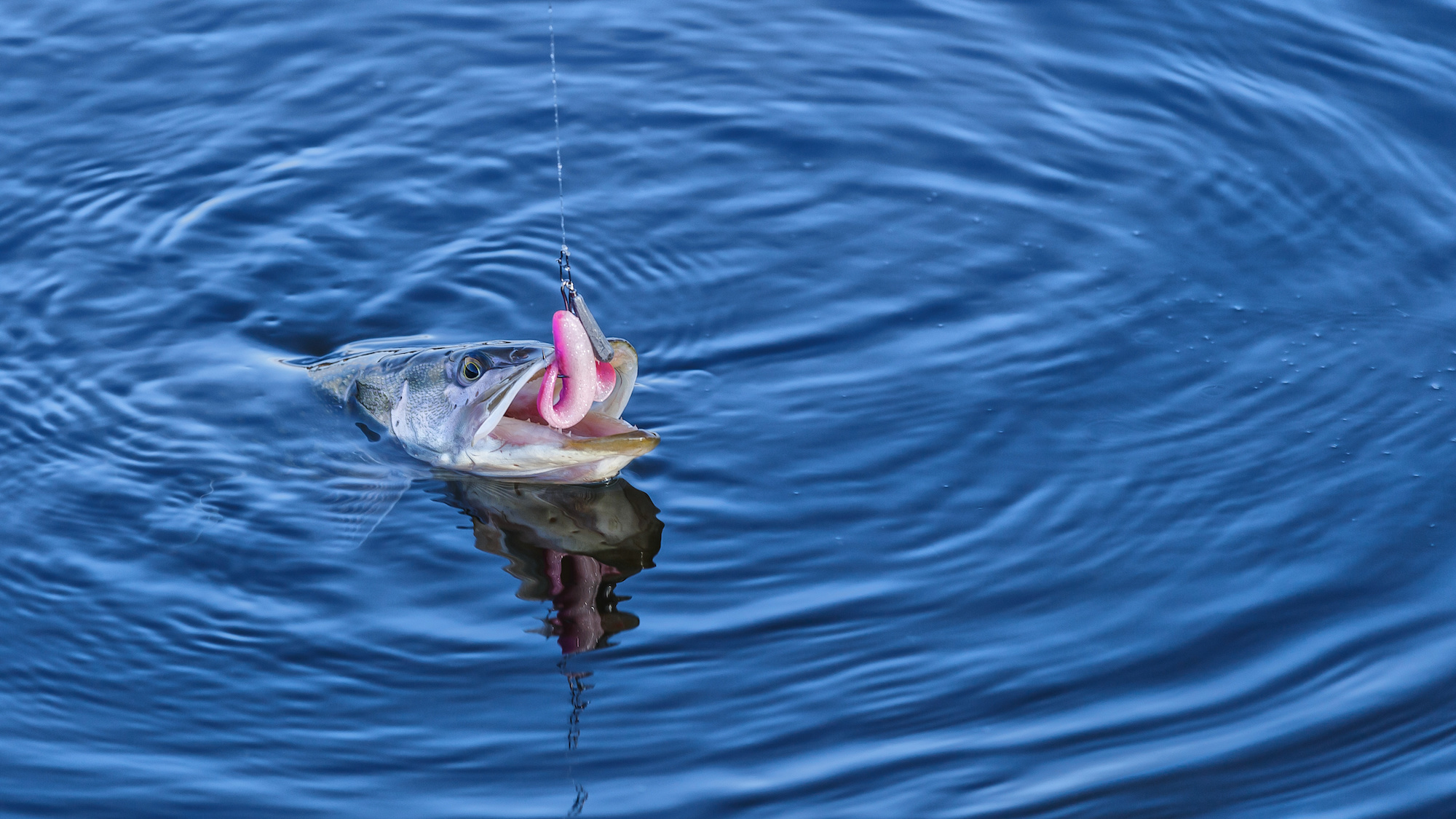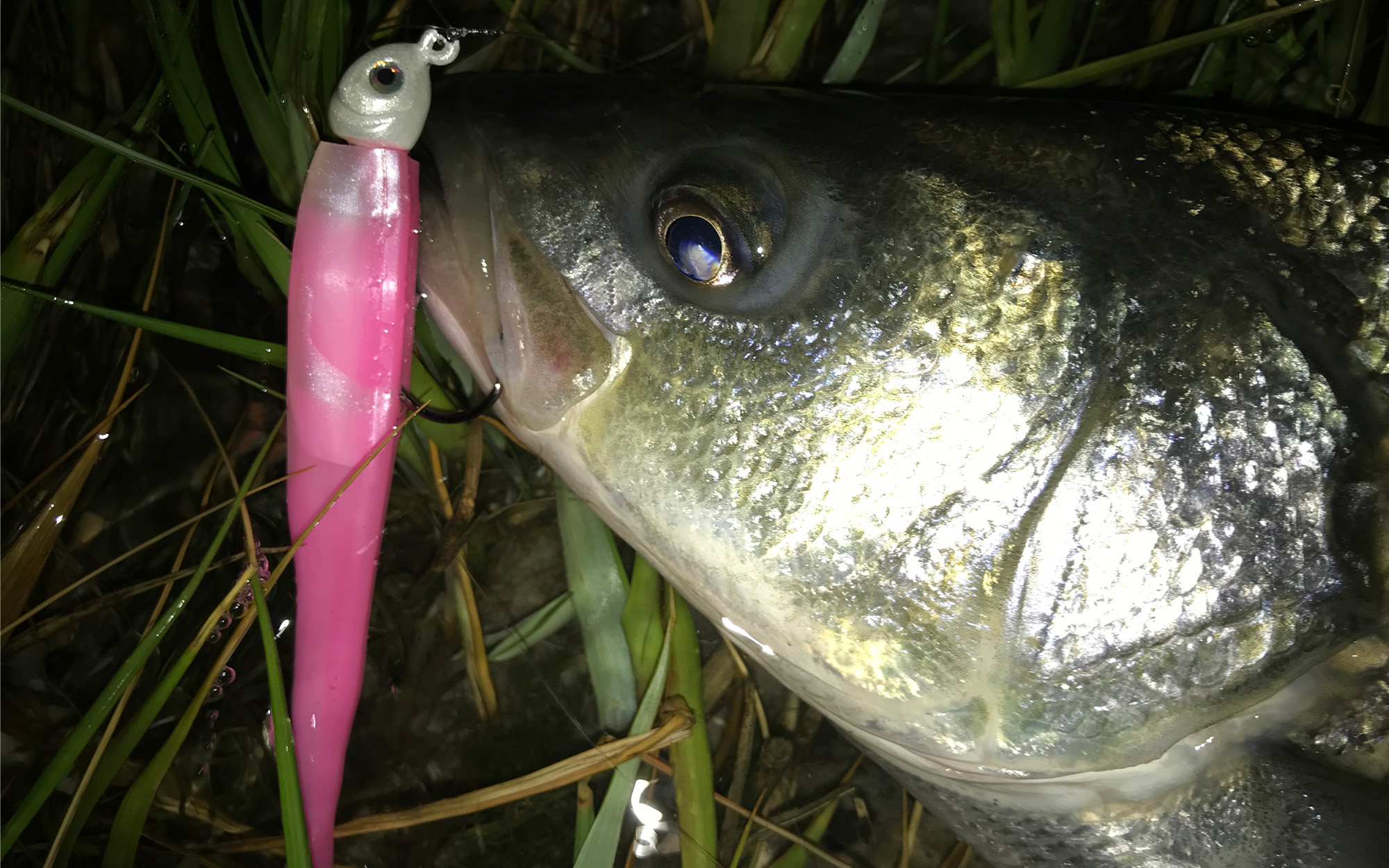It won’t just help your wallet. You’ll be helping the environment, too

Toothy predators like pike are especially hard on soft plastic lures, but there are ways to minimize this damage. Photograph by mitsyko1971 / Adobe stock
We may earn revenue from the products available on this page and participate in affiliate programs. Learn More ›
If you fish soft plastic lures with any frequency, you’re bound to lose a fair amount of them. It makes no difference if you’re out on the ocean, a trout stream, or a bass pond. Given the soft, pliable material that makes these lures so wiggly and lifelike, it’s inevitable that between simple wear and tear, missed strikes, and toothy predators, a good percentage of your soft plastics will end up on the bottom throughout the course of a season. But do you ever consider what happens to those fallen soldiers?
The state of Maine thinks about it a lot. On a base level, of course, lost (or purposely discarded) soft plastics create litter in our waters. But biologists in Maine studying salmonids like native brook trout and lake trout discovered a concerning amount of soft plastic lures in their stomachs. These weren’t a product of missed strikes, mind you, but lures and pieces of lures laying on the bottom that these fish mistook for food.
According to a recent article in the Bangor Daily News, species like bass have the ability to expel soft plastics that are swallowed, while salmonids do not. As their stomachs fill with the plastic material, it leaves less room for natural forage and ultimately kills the fish. While Maine’s efforts to reduce the number of soft plastics in its waters have been ongoing for years to protect salmonids, a bottom full of soft plastics isn’t good for any body of water anywhere. With a tiny bit of extra effort on the water, however, you can greatly reduce the number of lures you lose. Here are a few easy tricks.
A Little Dab
Do you keep a little tube of super glue in your tackle bag or boat? If you don’t, you should. Super glue can be used for anything in a pinch from repairing a crack in a hard bait or fly line to closing a painful line cut on your finger. It will also greatly reduce the money you spend on soft plastic lures if you’re diligent.

One tiny drop on the collar of a jighead will greatly diminish a fish’s ability to rip off the lure when short striking. This trick has been employed by anglers casting large custom (and pricey) soft-plastic swimbaits for many years, though it works just as well for smaller, less expensive plastics.
Thread the lure on the hook, but just before pushing it forward to the back of the jighead, add that drop of glue. Yes, changing colors is now a bit more of a chore. I find it easier to do so by tying on a fresh jighead and rigging a new plastic, but I’ve had lures glued in place last for many fishing sessions before being worn out. When they are, I’ll remove them, scrape any remaining bits of plastic off the jighead and reuse it on the next bait.
No Loose Screws
If you don’t want to use glue on your baits, consider switching to jigheads that feature a screw lock. You can find them in a wide range of sizes, and although they’re pricier than jigheads without the lock, they’ll save a lot of baits.
Read Next: The Best Soft Plastic Baits for Bass of 2023
A screw lock is simply a small, spring like coil behind the jig’s head that’s positioned over the hook shank. It behaves like a corkscrew, so after threading your soft plastic partially down the hook shank, you then twist it around the shank driving the corkscrew into the nose of the bait until it seats right behind the jig’s head. Once locked in place, it becomes very difficult for fish or snags to rip it free. The bait can also be backed out of the corkscrew with a relatively small amount of damage — or at least little enough that it can be used again — if you need to change colors.
The screw lock feature is also available on wide-gap hooks nowadays, which are used in a plethora of bass presentations from weedless rigging, to Texas rigging, to Carolina rigging. Though they might cost a bit more than a pack of budget wide-gaps, these, too, will save your baits, as they’ll stop them from being ripped off or threaded up the line during the fight and shaken off, which is a common occurrence.
Join the (Rubber) Band
Stick baits like the Yamamoto Senko and YUM Dinger are some of the most popular soft plastics ever made. From bass pros on massive lakes to weekend anglers at backwoods farm ponds, these lures catch piles of bass. Though there are many ways to rig them, wacky style is the most common — and arguably the deadliest. A small hook is pierced through the middle of the bait as if it were a garden worm. Since it’s positioned perpendicular to the hook, a twitch of the rod will make the lure briefly fold into a U shape, then it’ll straighten out and wobble seductively as it falls back to the bottom.
Though highly effective, these lures and this presentation account for loads of lost soft plastics. To achieve that fluttering action, the material in these baits is very soft. Couple that with a small, thin wacky hook and it’s very easy to rip it out of the bait. If you catch a fish, the lure is rarely intact, but even if you’re not getting any bites, stick baits pull free of the hook easily during the retrieve.
Read Next: How to Avoid Line Tangles When Fishing
A simple way to reduce stick bait loss is to use a wacky rig tool. It looks like a pen, but it’s hollow so you can insert a stick bait into the wider end. The narrower end features a stack of small rubber bands. All you do it slide one band down the tool until it seats right in the middle of your stick bait. Now, instead of piercing the soft plastic body with your hook, you thread it under the rubber band. You can buy replacement bands at most tackle shops, and they’re far tougher than the lure material itself, increasing the odds that a fish won’t shake the stick bait free, and it won’t pull off as you work the bait.
